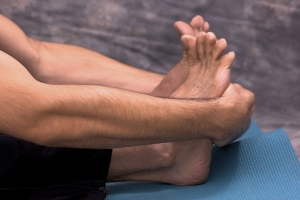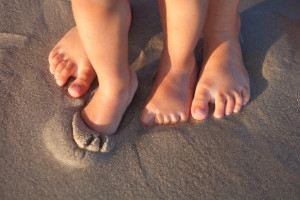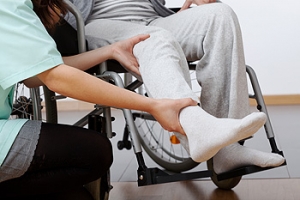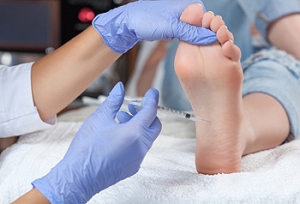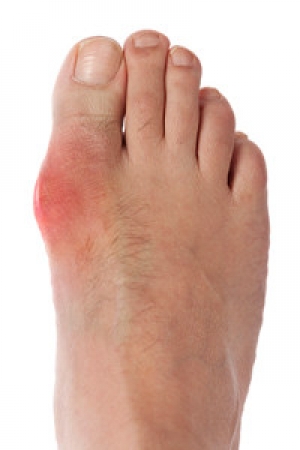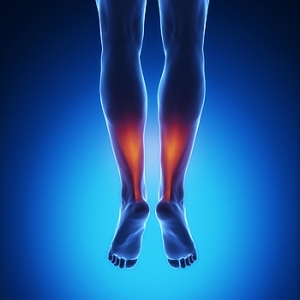Dallas Metro / North Texas
(214) 710-1028
Super User
Dealing with Stress Fractures of the Foot and Ankle
Stress fractures are small breaks in the bone that are caused by repetitive stress. They typically occur due to overuse, forcing the bones of the foot or ankle to continually absorb the full impact of each step taken. Stress fractures can also be caused by abnormal foot structure, osteoporosis, bone deformities, or wearing improper footwear during exercise.
Stress fractures are common for individuals whose daily activities cause high levels of impact on their feet and ankles. Those who run, play tennis or basketball, or practice gymnastics tend to experience these fractures more frequently. Anyone is susceptible to this problem, though. Individuals who are normally sedentary and suddenly begin an intense, high impact workout may sustain stress fractures. This is because their muscles are not yet strong enough to handle and cushion the intensity of their activity. Osteoporosis may also cause someone to get stress fractures, because the disease weakens an afflicted person's bones and makes it easier for them to break down.
Pain from stress fractures typically occurs in the general area of the fracture. Pain can also manifest as “pinpoint pain” or pain that is felt when the site of the injury is touched, and can be accompanied by swelling. It may occur during or after activity, and it may disappear while resting and return when standing or moving. Engaging in any kind of activity, high impact or otherwise, will aggravate the pain. If the intensity of the activity increases before the stress fracture has properly healed, it can cause a full fracture.
Treatment can vary depending on the individual and the degree of injury. The primary way to treat a stress fracture is to rest the hurt foot. Some fractures will heal quickly with only a little bit of rest, while others may require a long rest period and the use of crutches, immobilization, or physical therapy. Under certain circumstances, surgery may be required to install support pins around the fracture to assist in healing.
If you are undergoing a new exercise regimen in running or some other kind of high impact activity, set incremental goals on a weekly basis so you can build up muscle strength. Make sure to wear supportive shoes to better protect you feet.
If you begin to experience any symptoms of stress fractures, you should stop exercising and rest. If the symptoms persist, consult with your podiatrist. Remembering these tips can help you prevent stress fractures to your foot and ankle, and allow you to continue living normally.
Stretching May Strengthen the Plantar Fascia
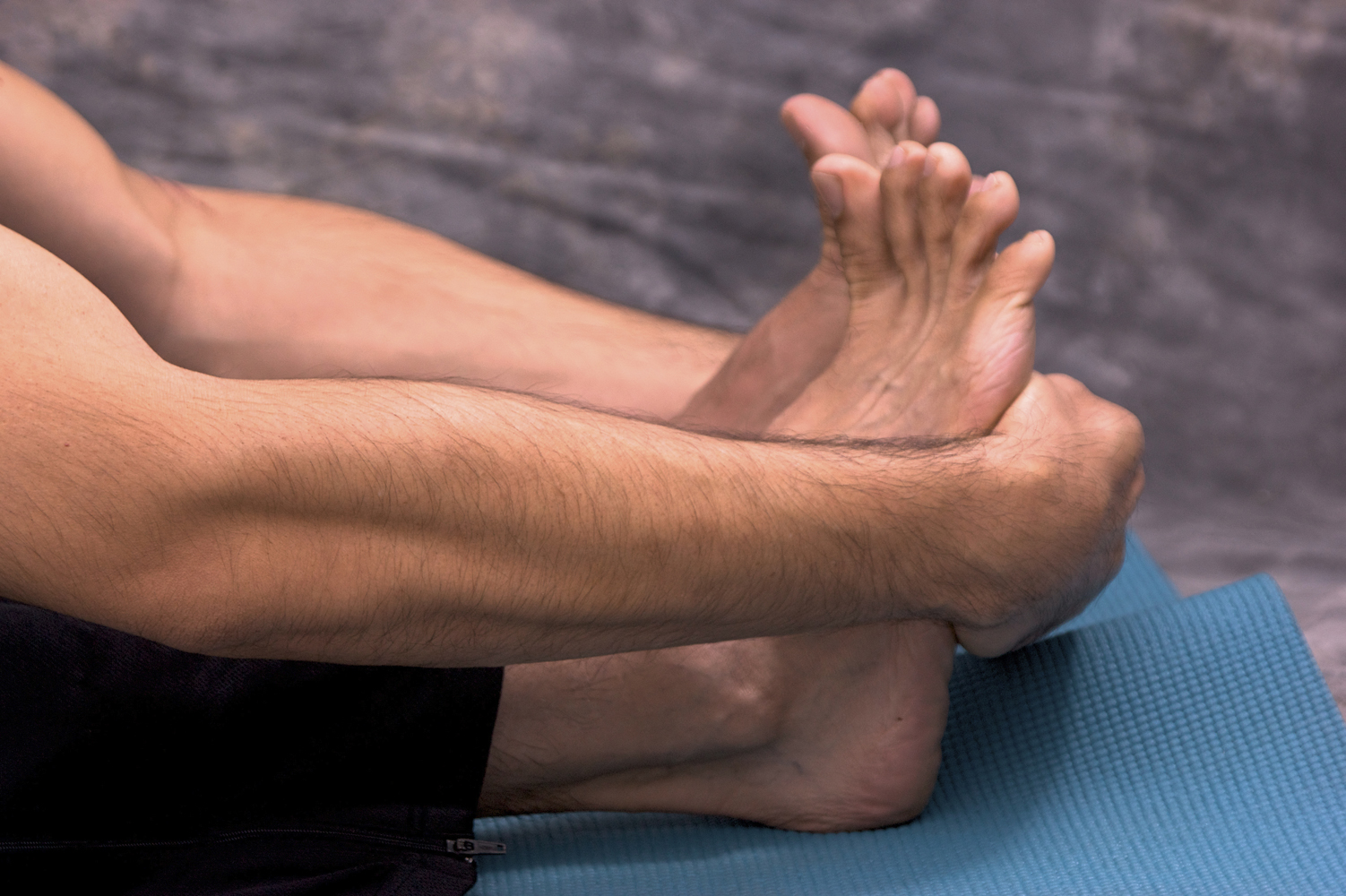 Specific foot conditions that are known as plantar fasciitis and heel spurs may be a result of shortened muscles in the lower legs and feet. Moderate relief may be obtained when these muscles are lengthened, and this may be accomplished by properly stretching the feet. An effective stretch for the plantar fascia consists of lowering your heel while standing on a step until a desired stretch is felt. Maximum results may be achieved by alternating feet and repeated several times per day. The towel stretch is an effective method in stretching this band of tissue on the bottom of the foot. A satisfying stretch may be achieved while sitting on the floor, wrapping a towel around the sole of the foot, while pulling inward. Hold this position for several seconds and repeat on the other foot. If you would like additional information about the importance of stretching your feet, please speak with a podiatrist who can recommend beneficial exercises.
Specific foot conditions that are known as plantar fasciitis and heel spurs may be a result of shortened muscles in the lower legs and feet. Moderate relief may be obtained when these muscles are lengthened, and this may be accomplished by properly stretching the feet. An effective stretch for the plantar fascia consists of lowering your heel while standing on a step until a desired stretch is felt. Maximum results may be achieved by alternating feet and repeated several times per day. The towel stretch is an effective method in stretching this band of tissue on the bottom of the foot. A satisfying stretch may be achieved while sitting on the floor, wrapping a towel around the sole of the foot, while pulling inward. Hold this position for several seconds and repeat on the other foot. If you would like additional information about the importance of stretching your feet, please speak with a podiatrist who can recommend beneficial exercises.
Stretching the feet is a great way to prevent injuries. If you have any concerns with your feet consult with Kellvan Cheng, DPM from Elite Foot & Ankle. Our doctor will assess your condition and provide you with quality foot and ankle treatment.
Stretching the Feet
Stretching the muscles in the foot is an important part in any physical activity. Feet that are tight can lead to less flexibility and make you more prone to injury. One of the most common forms of foot pain, plantar fasciitis, can be stretched out to help ease the pain. Stretching can not only ease pain from plantar fasciitis but also prevent it as well. However, it is important to see a podiatrist first if stretching is right for you. Podiatrists can also recommend other ways to stretch your feet. Once you know whether stretching is right for you, here are some excellent stretches you can do.
- Using a foam roller or any cylindrical object (a water bottle or soda can will do), roll the object under your foot back and forth. You should also exert pressure on the object. Be sure to do this to both feet for a minute. Do this exercise three times each.
- Similar to the previous one, take a ball, such as a tennis ball, and roll it under your foot while seated and exert pressure on it.
- Grab a resistance band or towel and take a seat. If you are using a towel, fold it length wise. Next put either one between the ball of your foot and heel and pull with both hands on each side towards you. Hold this for 15 seconds and then switch feet. Do this three times for each foot.
- Finally hold your big toe while crossing one leg over the other. Pull the toe towards you and hold for 15 seconds. Once again do this three times per foot.
It is best to go easy when first stretching your foot and work your way up. If your foot starts hurting, stop exercising and ice and rest the foot. It is advised to then see a podiatrist for help.
If you have any questions, please feel free to contact our office located in Carrollton, TX . We offer the newest diagnostic and treatment technologies for all your foot care needs.
Try Soft Soled Shoes for Baby's First Shoe
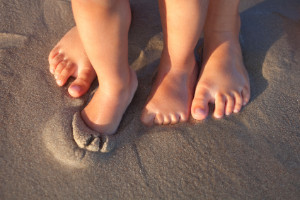 Research has shown that a baby’s foot is generally flexible and padded with fatty tissue until walking begins. Babies will typically begin walking at approximately 12 months of age and many toddlers are flat footed. This condition will generally disappear once walking has begun, and this may be a result of the increased strength of bones and muscles that are present in the feet. When the walking process starts, a soft soled shoe is ideal to begin wearing and this may enable the toddler to feel the ground while walking, in addition to protecting their feet. The correct shoe size may be determined by measuring your child’s feet frequently and this may aid in monitoring the speed of their growing feet. Please make sure there is plenty of room for the toes to move freely in, in addition to confirming the shoe is comfortable in width and length. It is suggested to consult with a podiatrist if you would like additional information about how to take care of children’s feet.
Research has shown that a baby’s foot is generally flexible and padded with fatty tissue until walking begins. Babies will typically begin walking at approximately 12 months of age and many toddlers are flat footed. This condition will generally disappear once walking has begun, and this may be a result of the increased strength of bones and muscles that are present in the feet. When the walking process starts, a soft soled shoe is ideal to begin wearing and this may enable the toddler to feel the ground while walking, in addition to protecting their feet. The correct shoe size may be determined by measuring your child’s feet frequently and this may aid in monitoring the speed of their growing feet. Please make sure there is plenty of room for the toes to move freely in, in addition to confirming the shoe is comfortable in width and length. It is suggested to consult with a podiatrist if you would like additional information about how to take care of children’s feet.
Making sure that your children maintain good foot health is very important as they grow. If you have any questions, contact Kellvan Cheng, DPM of Elite Foot & Ankle. Our doctor can provide the care you need to keep you pain-free and on your feet.
Keeping Children's Feet Healthy
Having healthy feet during childhood can help prevent medical problems later in life, namely in the back and legs. As children grow, their feet require different types of care. Here are some things to consider...
Although babies do not walk yet, it is still very important to take care of their feet.
Avoid putting tight shoes or socks on his or her feet.
Allow the baby to stretch and kick his or her feet to feel comfortable.
As a toddler, kids are now on the move and begin to develop differently. At this age, toddlers are getting a feel for walking, so don’t be alarmed if your toddler is unsteady or ‘walks funny’.
As your child gets older, it is important to teach them how to take care of their feet.
Show them proper hygiene to prevent infections such as fungus.
Be watchful for any pain or injury.
Have all injuries checked by a doctor as soon as possible.
Comfortable, protective shoes should always be worn, especially at play.
If you have any questions please feel free to contact our office located in Carrollton, TX . We offer the newest diagnostic and treatment technologies for all your foot and ankle needs.
Is Foot Therapy Effective?
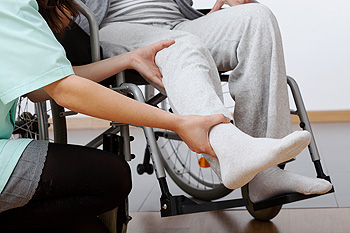 Many people have experienced foot and ankle injuries and may be familiar with physical therapy as a form of positive foot therapy. It may contribute in providing the desired relief, which may be needed from uncomfortable foot conditions that may include plantar fasciitis or foot and ankle fractures. This type of therapy may be conducive in restoring joint mobility, much needed muscle strength, in addition to improvements in walking. These types of injuries may originate from overuse of the muscles and tendons in the feet and ankles. Additionally, foot therapy may be useful in recovering from foot or ankle surgery. If you have endured a serious injury to your foot, ankle, or surrounding areas, it is advised to seek the counsel of a podiatrist who can recommend the best form of therapy for you.
Many people have experienced foot and ankle injuries and may be familiar with physical therapy as a form of positive foot therapy. It may contribute in providing the desired relief, which may be needed from uncomfortable foot conditions that may include plantar fasciitis or foot and ankle fractures. This type of therapy may be conducive in restoring joint mobility, much needed muscle strength, in addition to improvements in walking. These types of injuries may originate from overuse of the muscles and tendons in the feet and ankles. Additionally, foot therapy may be useful in recovering from foot or ankle surgery. If you have endured a serious injury to your foot, ankle, or surrounding areas, it is advised to seek the counsel of a podiatrist who can recommend the best form of therapy for you.
Foot therapy is often necessary for those recovering from either foot deformities or foot injuries. If you have concerns regarding therapy, Kellvan Cheng, DPM of Elite Foot & Ankle. Our doctor can provide the care you need to keep you pain-free and on your feet.
Most Common Injuries
People who are active or athletes are prone to a variety of injuries. Therefore, it is often important to take part in physical therapy in order to quickly get back on the right track.
What to Do When Injured
Physical Therapy – This specialized treatment will focus on the affected area, speeding up recovery and the overall healing process. It is a proven method that has helped millions of people return from any injury.
During physical therapy you will undergo regimented training to get back into full form. Training is often very difficult, especially at first when the foot feels weak. Physical therapy often involves:
Basic stretching and twisting exercises – getting the feet’s mobility and flexibility up.
Massaging – the therapist will massage the injured area in order to activate the muscles and relax them.
Strengthening Exercises – this allows the muscles in the affected area to regain their full strength, a vital step towards full recovery.
If you have any questions please feel free to contact our office located in Carrollton, TX . We offer the newest diagnostic tools and technology to treat your foot and ankle needs.
Foot Therapy for Sports Injuries
Whether in practice or in the game, athletes put their bodies through great stress. Some sports demand more from the body than others. However, every sport has an element of inorganic movement or unnatural motion. For example, in softball, a pitcher winds up and flings her body with an incredible amount of dexterity in order to get the most ideal velocity out of her pitches. This motion, incredibly taxing on the body, can cause serious injury.
One of the most common issues of athletic injuries happens in the feet. If it’s a damaging fracture that leaves the athlete sidelined or just a simple turf toe, foot injuries can still be very frustrating and painful. Regardless of the sport, athletes still require use of their feet in some fashion. This is why foot therapy is extremely vital for getting athletes back on the right track to return to the field.
No matter the injury, the best way to speed up the recovery period is to receive physical therapy. Physical therapy has proven to work for millions of people. Professional physical therapists are specifically trained to help people return to proper form from any injury.
During physical therapy, you will go through organized training in order to get back into form. Sometimes training can be quite difficult, especially in the beginning when there is more pain and the foot feels awkward. To alleviate this, you will do basic twisting and stretching exercises in order to get flexibility and foot mobility back up. The therapist will also massage the injured area to activate and relax muscles. Over time you will eventually move up to strengthening exercises, designed specifically so that the injured area is exercised.
Foot therapy for sports is a modern science miracle. Unlike other treatments that may employ the use of fancy chemicals and terminology, physical therapy is an evidence-based practice that offers the same benefits. Due to huge advancements in the knowledge of muscles and joints, doctors can turn catastrophic injuries around so that athletes can return to the game once more.
Steroid Injections May Possibly Treat Arthritis
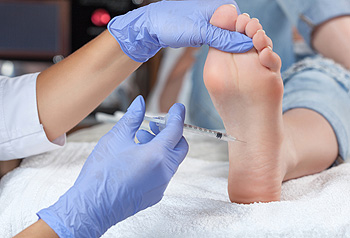 If you are experiencing pain, stiffness, or swelling in the joints of your feet, you may have what is known as arthritis. A common area of the foot where arthritis may appear are the toes, and severe pain and discomfort may be felt while lifting the toes to walk. You may notice a permanent bend in the joints of the toes, and this may make it difficult for the foot to lie flat on the floor. Some patients notice a bump developing on top of the toes, and this may possibly result from the joints rubbing together. Additionally, the toenails may separate from the nail bed, or pain may be felt in the rest of the foot. Possible treatment options can include injecting steroids, which may aid in reducing any inflammation that may be present. Having surgery performed, which may be helpful in reshaping the bones in the feet may be an additional option. It is advised to speak to a podiatrist who can assist you in determining which treatment is best for you.
If you are experiencing pain, stiffness, or swelling in the joints of your feet, you may have what is known as arthritis. A common area of the foot where arthritis may appear are the toes, and severe pain and discomfort may be felt while lifting the toes to walk. You may notice a permanent bend in the joints of the toes, and this may make it difficult for the foot to lie flat on the floor. Some patients notice a bump developing on top of the toes, and this may possibly result from the joints rubbing together. Additionally, the toenails may separate from the nail bed, or pain may be felt in the rest of the foot. Possible treatment options can include injecting steroids, which may aid in reducing any inflammation that may be present. Having surgery performed, which may be helpful in reshaping the bones in the feet may be an additional option. It is advised to speak to a podiatrist who can assist you in determining which treatment is best for you.
Arthritis can be a difficult condition to live with. If you are seeking treatment, contact Kellvan Cheng, DPM from Elite Foot & Ankle. Our doctor can provide the care you need to keep you pain-free and on your feet.
Arthritic Foot Care
Arthritis is a joint disorder that involves the inflammation of different joints in your body, such as those in your feet. Arthritis is often caused by a degenerative joint disease and causes mild to severe pain in all affected areas. In addition to this, swelling and stiffness in the affected joints can also be a common symptom of arthritis.
In many cases, wearing ill-fitting shoes can worsen the effects and pain of arthritis. Wearing shoes that have a lower heel and extra room can help your feet feel more comfortable. In cases of rheumatoid arthritis, the arch in your foot may become problematic. Buying shoes with proper arch support that contour to your feet can help immensely.
Alleviating Arthritic Pain
- Exercises that stretch the foot can prevent further pain and injury and increase mobility
- Most of the pain can be alleviated with anti-inflammatory drugs, heat, and topical medications
- Massages can help temporarily alleviate pain.
It is best to see your doctor for the treatment that is right for your needs and symptoms. Conditions vary, and a podiatrist can help you determine the right method of care for your feet.
If you have any questions, please feel free to contact our office located in Carrollton, TX . We offer the newest diagnostic tools and technology to treat your foot and ankle needs.
Arthritic Foot Care
During your lifetime, you will probably walk about 75,000 miles, which is quite a lot of stress to put on your feet. As you get older, the 26 bones and 30 joints in each of your feet will lose flexibility and elasticity. Your foot’s natural shock absorbers will wear down as well. Having arthritis added to this mix only makes matters worse. Your joints will become distorted and inflamed, which is why arthritic foot care needs to be something to think about every day.
When dealing with arthritis, having additional foot complications, such as bunions, hammertoes, or neuroma, can be a serious detriment. To avoid these, buy well-fitting shoes with a lower heel and good support. Arthritis causes you to lose your arch, so having shoes with good arch support is also highly recommended.
Aside from getting good arch support, the shoes need to fit comfortably and properly as well. A good place to start is by leaving a finger width between the back of the shoe and your foot to gauge proper size. It is also helpful to have a square or rounded toe box in the front to provide even more comfort. Another thing to look for is a rubber sole that can provide a cushion and absorb shock as you walk. This adds flexibility to the ball of your foot when you push off your heel to walk.
Exercise is another key aspect of arthritic foot care. Exercise not only strengthens and stretches your muscles and joints, but helps to prevent further injury and pain as well. Stretching the Achilles tendon, the tendon located in the back of your heel, will give you added mobility and reduce pain due to stress. Another thing you can do is massage your feet, kneading the ball of your foot as well as your toes from top to bottom.
Stretching the Achilles tendon is a simple exercise that you can do at home anytime. Lean against the wall with your palms flat against the surface while placing one foot forward, towards the wall, and one foot behind you. Bend your forward knee towards the wall while keeping your back knee locked straight, and make sure both your heels are completely touching the ground at all times. This will stretch your Achilles tendon and calf muscles as well. You will feel the stretch almost immediately. You can also stretch your toes in a couple ways. One involves taking a rubber band and wrapping it around both your big toes while your heels remain together. Then, pull them apart to stretch your big toe. You can also place a rubber band around all the toes of one of your feet. Then, try to separate each individual toe, stretching them all.
A final step you can take to help your arthritis is taking non-steroid, non-inflammatory drugs or topical medicines with capsaicin. Unfortunately, there is no complete way to remove all of your arthritic pain. However, following some of this advice can go a long way in staying as pain-free as possible.
Causes of Gout
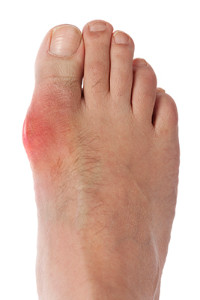 The medical condition that is referred to as gout is a form of arthritis, which may affect the joints in the big toe. This condition may typically be associated with severe pain and discomfort and is the result of excess uric acid in the blood levels. Crystals will form in the joints of the big toe and the pain may be debilitating until this ailment subsides. There are several causes for this condition to develop, including a family history of gout and ingesting foods that are high in purine levels. These foods may include eating excess shellfish, red meat, or drinking an overabundance of alcohol. Research has shown that stress, specific medications, or a prolonged illness may play a significant role in developing gout. If you feel you have this condition, it is advised to speak with a podiatrist who can properly treat this uncomfortable condition.
The medical condition that is referred to as gout is a form of arthritis, which may affect the joints in the big toe. This condition may typically be associated with severe pain and discomfort and is the result of excess uric acid in the blood levels. Crystals will form in the joints of the big toe and the pain may be debilitating until this ailment subsides. There are several causes for this condition to develop, including a family history of gout and ingesting foods that are high in purine levels. These foods may include eating excess shellfish, red meat, or drinking an overabundance of alcohol. Research has shown that stress, specific medications, or a prolonged illness may play a significant role in developing gout. If you feel you have this condition, it is advised to speak with a podiatrist who can properly treat this uncomfortable condition.
Gout is a foot condition that requires certain treatment and care. If you are seeking treatment, contact Kellvan Cheng, DPM from Elite Foot & Ankle. Our doctor will treat your foot and ankle needs.
What Is Gout?
Gout is a type of arthritis caused by a buildup of uric acid in the bloodstream. It often develops in the foot, especially the big toe area, although it can manifest in other parts of the body as well. Gout can make walking and standing very painful and is especially common in diabetics and the obese.
People typically get gout because of a poor diet. Genetic predisposition is also a factor. The children of parents who have had gout frequently have a chance of developing it themselves.
Gout can easily be identified by redness and inflammation of the big toe and the surrounding areas of the foot. Other symptoms include extreme fatigue, joint pain, and running high fevers. Sometimes corticosteroid drugs can be prescribed to treat gout, but the best way to combat this disease is to get more exercise and eat a better diet.
If you have any questions please feel free to contact our office located in Carrollton, TX . We offer the newest diagnostic and treatment technologies for all your foot and ankle needs.
Different Types of Pain That is Associated with the Achilles Tendon
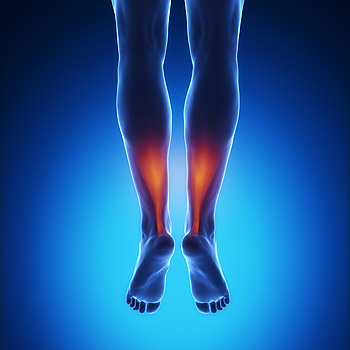 The largest tendon in the body is referred to as the Achilles tendon. The purpose of this particular tendon is to connect the heel to the toes, and if this should endure an injury and become torn or inflamed, severe pain and discomfort may be an unfortunate repercussion. There are different types of pain that is associated with the Achilles tendon, which may include Achilles tendonitis and Achilles tendinosis. The latter condition consists of chronic pain that may originate from improper treatment of Achilles tendonitis. This original ailment may occur in people who participate in running and jumping activities, and severe pain and burning may often accompany this type of tendonitis. There may be additional reasons why this tendon may become inflamed, including running in cold weather or having flat feet, or if one leg is significantly shorter than the other. If you are experiencing pain that involves the Achilles tendon, it’s suggested to speak to a podiatrist, so a proper diagnosis can be obtained, and treatment can begin.
The largest tendon in the body is referred to as the Achilles tendon. The purpose of this particular tendon is to connect the heel to the toes, and if this should endure an injury and become torn or inflamed, severe pain and discomfort may be an unfortunate repercussion. There are different types of pain that is associated with the Achilles tendon, which may include Achilles tendonitis and Achilles tendinosis. The latter condition consists of chronic pain that may originate from improper treatment of Achilles tendonitis. This original ailment may occur in people who participate in running and jumping activities, and severe pain and burning may often accompany this type of tendonitis. There may be additional reasons why this tendon may become inflamed, including running in cold weather or having flat feet, or if one leg is significantly shorter than the other. If you are experiencing pain that involves the Achilles tendon, it’s suggested to speak to a podiatrist, so a proper diagnosis can be obtained, and treatment can begin.
Achilles tendon injuries need immediate attention to avoid future complications. If you have any concerns, contact Kellvan Cheng, DPM of Elite Foot & Ankle. Our doctor can provide the care you need to keep you pain-free and on your feet.
What Is the Achilles Tendon?
The Achilles tendon is a tendon that connects the lower leg muscles and calf to the heel of the foot. It is the strongest tendon in the human body and is essential for making movement possible. Because this tendon is such an integral part of the body, any injuries to it can create immense difficulties and should immediately be presented to a doctor.
What Are the Symptoms of an Achilles Tendon Injury?
There are various types of injuries that can affect the Achilles tendon. The two most common injuries are Achilles tendinitis and ruptures of the tendon.
Achilles Tendinitis Symptoms
- Inflammation
- Dull to severe pain
- Increased blood flow to the tendon
- Thickening of the tendon
Rupture Symptoms
- Extreme pain and swelling in the foot
- Total immobility
Treatment and Prevention
Achilles tendon injuries are diagnosed by a thorough physical evaluation, which can include an MRI. Treatment involves rest, physical therapy, and in some cases, surgery. However, various preventative measures can be taken to avoid these injuries, such as:
- Thorough stretching of the tendon before and after exercise
- Strengthening exercises like calf raises, squats, leg curls, leg extensions, leg raises, lunges, and leg presses
If you have any questions please feel free to contact our office located in Carrollton, TX . We offer the newest diagnostic tools and technology to treat your foot and ankle needs.
Achilles Tendon Injuries
The Achilles tendon is the largest tendon in the body; it is a tough band of fibrous tissue that stretches from the bones of the heel to the calf muscles. This tendon is what allows us to stand on our toes while running, walking, or jumping, it is common for this tendon to become injured. In severe cases, the Achilles tendon may become partially torn or completely ruptured. However, this tendon is susceptible to injury because of its limited blood supply and the high level of tension it endures.
The people who are more likely to suffer from Achilles tendon injuries are athletes who partake in activities that require them to speed up, slow down, or pivot. Consequently, athletes who engage in running, gymnastics, dance, football, baseball, basketball, or tennis are more likely to suffer from Achilles tendon injuries. Additionally, there are other factors that may make you more prone to this injury. People who wear high heels, have flat feet, tight leg muscles or tendons, or take medicines called glucocorticoids are more likely to have Achilles tendon injuries.
A common symptom of an Achilles tendon injury is pain above the heel that is felt when you stand on your toes. However, if the tendon is ruptured, the pain will be severe, and the area may become swollen and stiff. Other symptoms may be reduced strength in the lower ankle or leg area, and reduced range of motion in the ankle. When the Achilles tendon tears, there is usually a popping sound that occurs along with it. People who have acute tears or ruptures may find walking and standing to be difficult.
If you suspect you have injured your Achilles tendon, you should see your podiatrist to have a physical examination. Your podiatrist will likely conduct a series of tests to diagnose your injury including a “calf-squeeze” test. Calf squeeze tests are performed by first squeezing the calf muscle on the healthy leg. This will pull on the tendon and consequently cause the foot to move. Afterward, the same test will be performed on the injured leg. If the tendon is torn, the foot won’t move because the calf muscle won’t be connected to the foot.
Featured Articles
- June 2025
- May 2025
- April 2025
- March 2025
- February 2025
- January 2025
- December 2024
- November 2024
- October 2024
- September 2024
- August 2024
- July 2024
- June 2024
- May 2024
- April 2024
- March 2024
- February 2024
- January 2024
- December 2023
- November 2023
- October 2023
- September 2023
- August 2023
- July 2023
- June 2023
- May 2023
- April 2023
- March 2023
- February 2023
- January 2023
- December 2022
- November 2022
- October 2022
- September 2022
- August 2022
- July 2022
- June 2022
- May 2022
- April 2022
- October 2019
- September 2019
- August 2019
- July 2019
- June 2019
- May 2019
- April 2019
- March 2019
- February 2019
- January 2019
- December 2018
- November 2018
- October 2018
- September 2018
- August 2018
- July 2018
- June 2018
- May 2018
- April 2018
- March 2018
- February 2018
- January 2018
- December 2017
- November 2017
- October 2017

